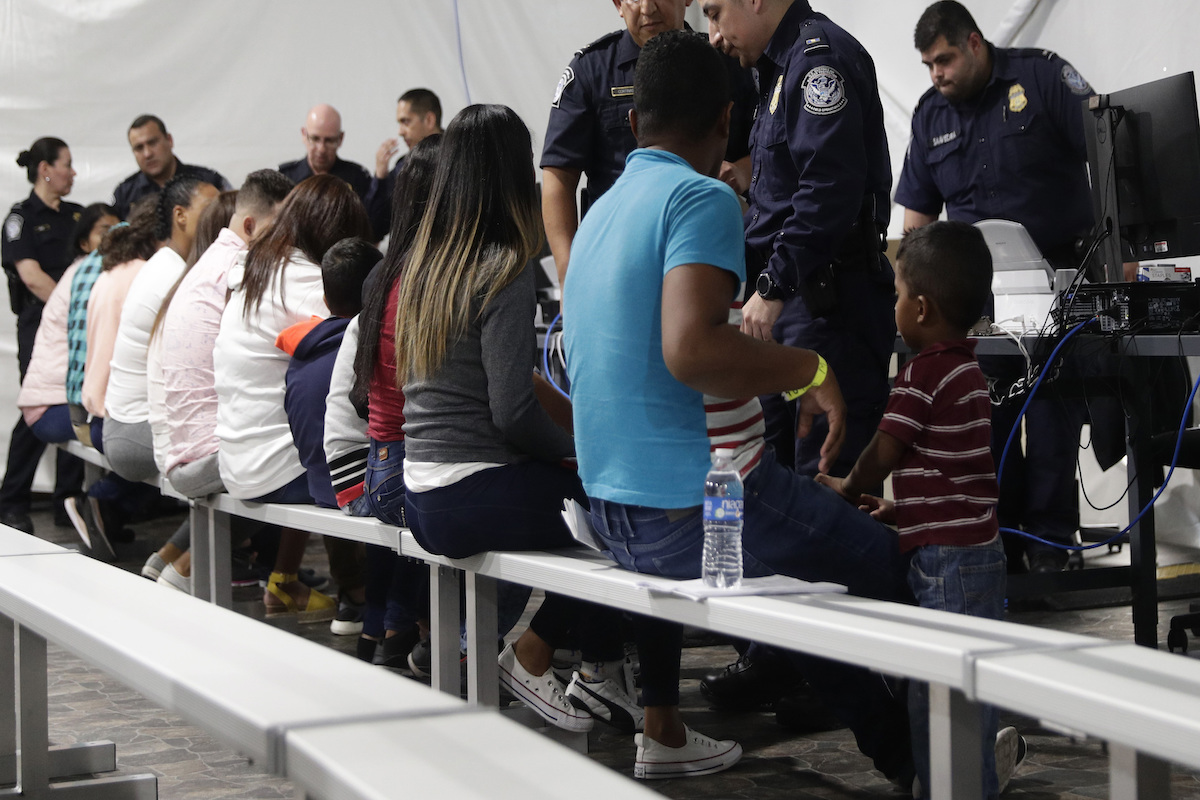

In this September 17, 2019, file photo, migrants who are applying for asylum in the United States go through a processing area at a new tent courtroom at the Migration Protection Protocols Immigration Hearing Facility, in Laredo, Texas. The U.S. government on Thursday, January 2, 2020, began sending asylum-seekers back to Nogales, Mexico, to await court hearings that will be scheduled roughly 350 miles away in Juárez, Mexico. Authorities are expanding a program known as Remain in Mexico that requires tens of thousands of asylum seekers to wait out their immigration court hearings in Mexico. (AP Photo/Eric Gay, File)
By ASTRID GALVÁN and CHRISTOPHER SHERMAN
PHOENIX (AP) — The U.S. government on Thursday began sending asylum seekers back to Nogales, Mexico, to await court hearings that will be scheduled roughly 350 miles (563 kilometers) away in Juárez, Mexico.
Authorities are expanding a program known as Remain in Mexico that requires tens of thousands of asylum seekers to wait out their immigration court hearings in Mexico. Until this week, the government was driving some asylum seekers from Nogales, Arizona, to El Paso, Texas, so they could be returned to Juárez.
Now, asylum seekers will have to find their own way through dangerous Mexican border roads.
About 30 asylum seekers were sent to Nogales, Mexico, on Thursday, said Gilda Loureiro, director of the San Juan Bosco migrant shelter in Nogales, Sonora.
Loureiro said the migrants hadn’t made it to the shelter yet but that it was prepared and has a capacity of about 400.
“We’re going to take up to the capacity we have,” she said.
Critics say the Remain in Mexico program, one of several Trump administration policies that have all but ended asylum in the U.S., puts migrants who fled their home countries back into dangerous Mexican border towns where they are often kidnapped, robbed or extorted.
A Human Rights First report released in December documented at least 636 public reports of violence against asylum seekers returned to Mexico including rape, kidnapping and torture. Human Rights First said that was a steep increase over October, when the group had identified 343 attacks, and noted the latest figure is surely an under-count because most crime victims don’t report.
The government calls the program Migrant Protection Protocols.
Nogales is now the seventh border crossing through which U.S. authorities returns migrants to Mexico to await court hearings. The policy was introduced in January 2018 in San Diego.
More than 56,000 people were sent back to Mexico by the end of November, according to Syracuse University’s Transactional Records Access Clearinghouse. Of the more than 24,000 cases that have been decided, only 117, or less than 1%, have been granted asylum or some other form relief allowing them to stay in the United States.
But U.S. authorities have lauded the program, saying it’s helped to significantly reduce illegal border crossings. The Border Patrol apprehended just over 33,000 people along the Southwest border in November, compared to 144,000 in May, when border crossings peaked.
In a statement, acting Department of Homeland Security Secretary Chad Wolf said the program has been “an extremely effective tool.”
“I am confident in the program’s continued success in adjudicating meritorious cases quickly and preventing fraudulent claims,” Wolf wrote.
A three-judge appeals court panel heard arguments October 1 in San Francisco on a lawsuit filed by the American Civil Liberties Union to block the policy. The court has yet to rule.
***
Sherman reported from Mexico City. Associated Press writer Elliot Spagat contributed to this report.


